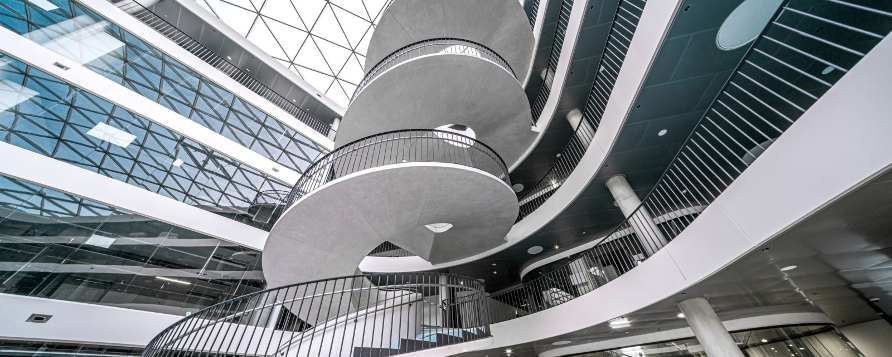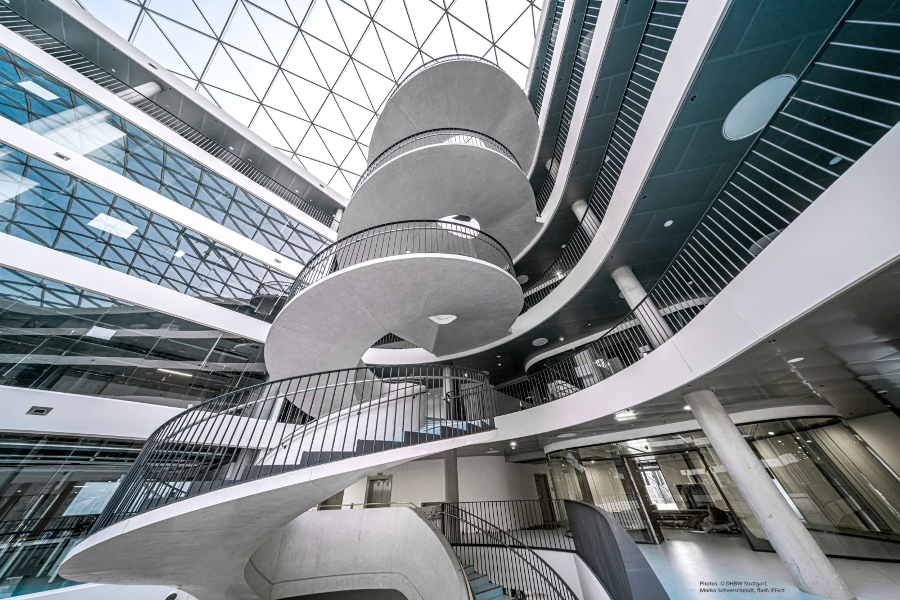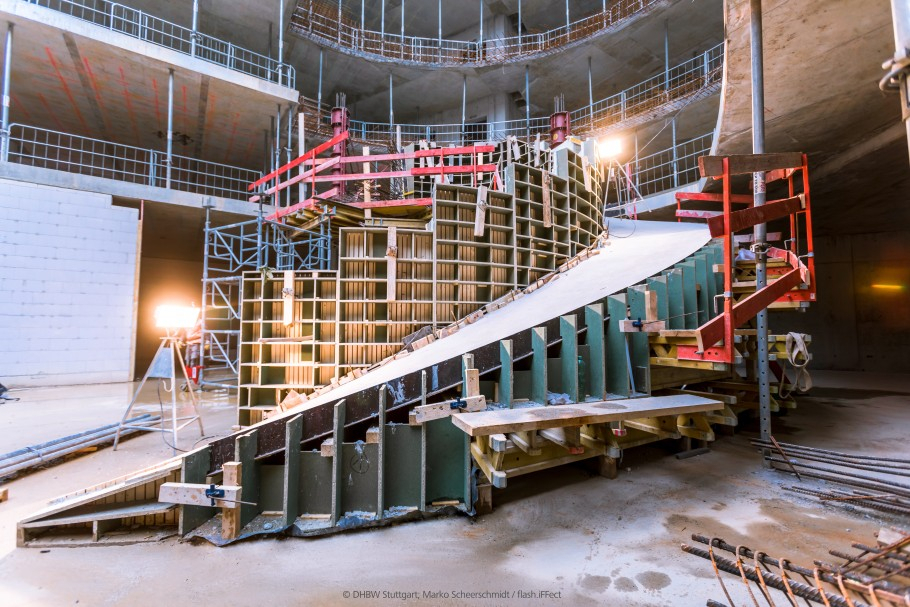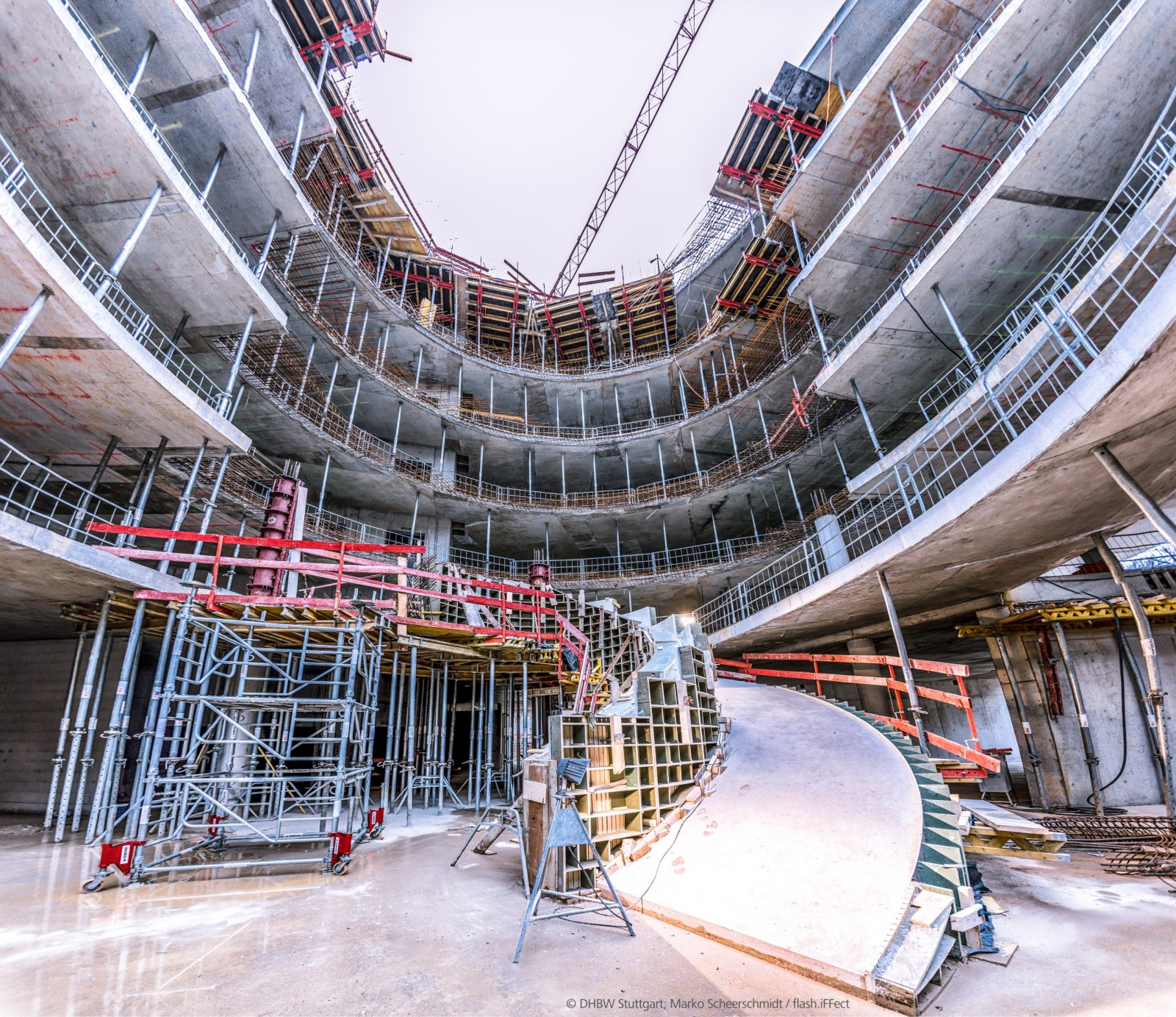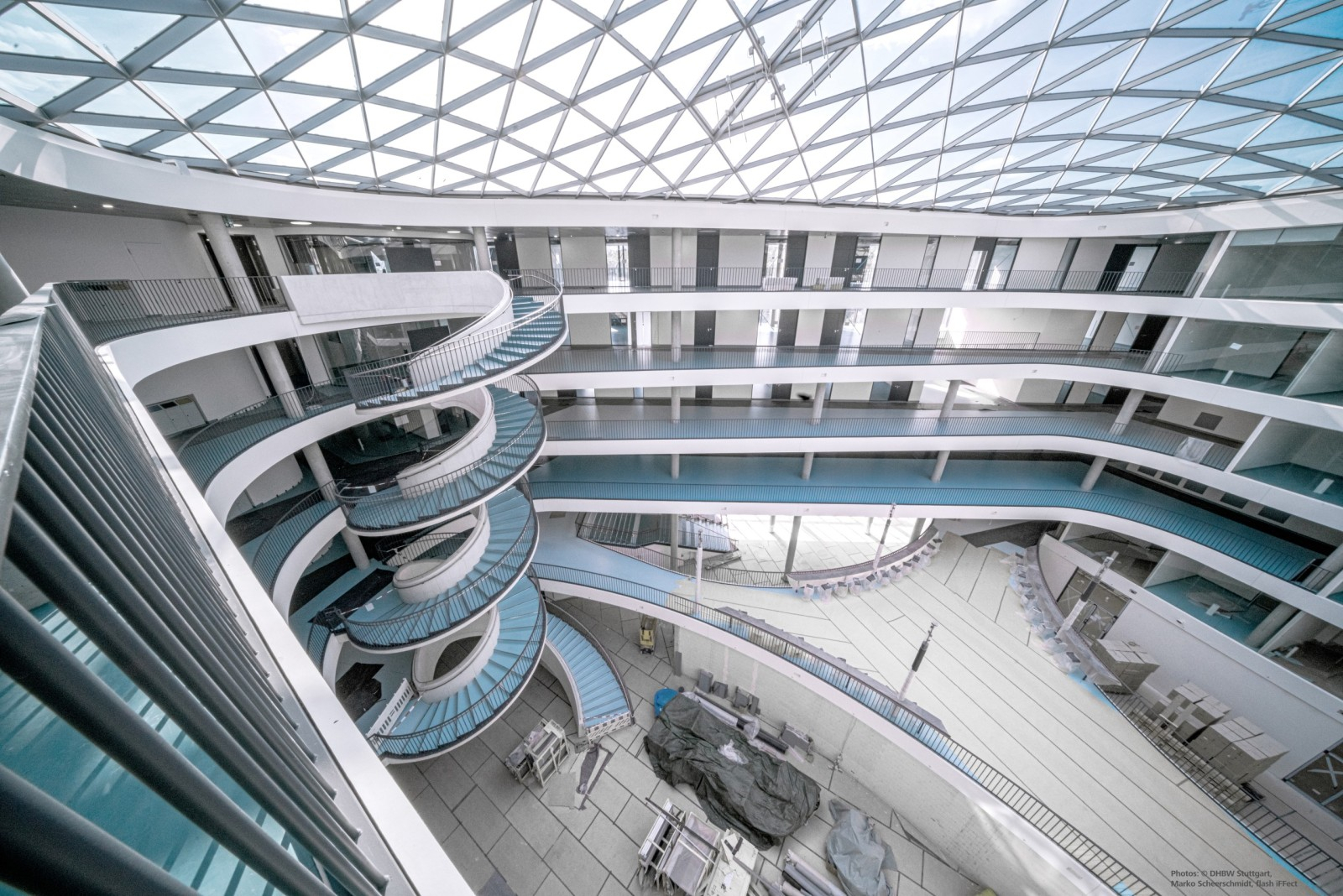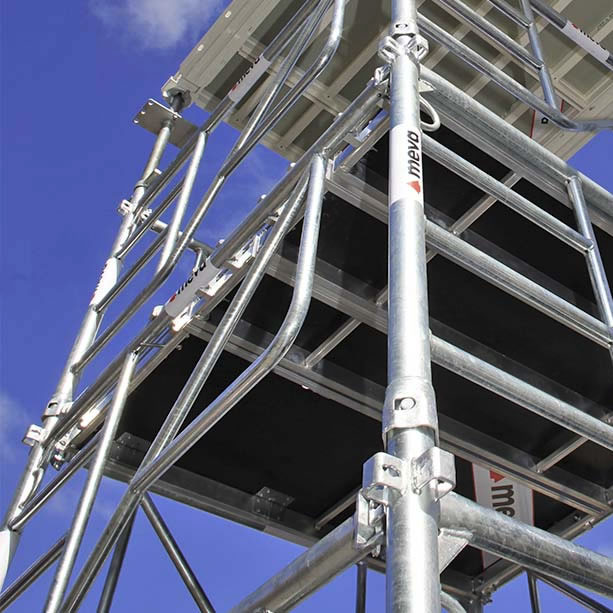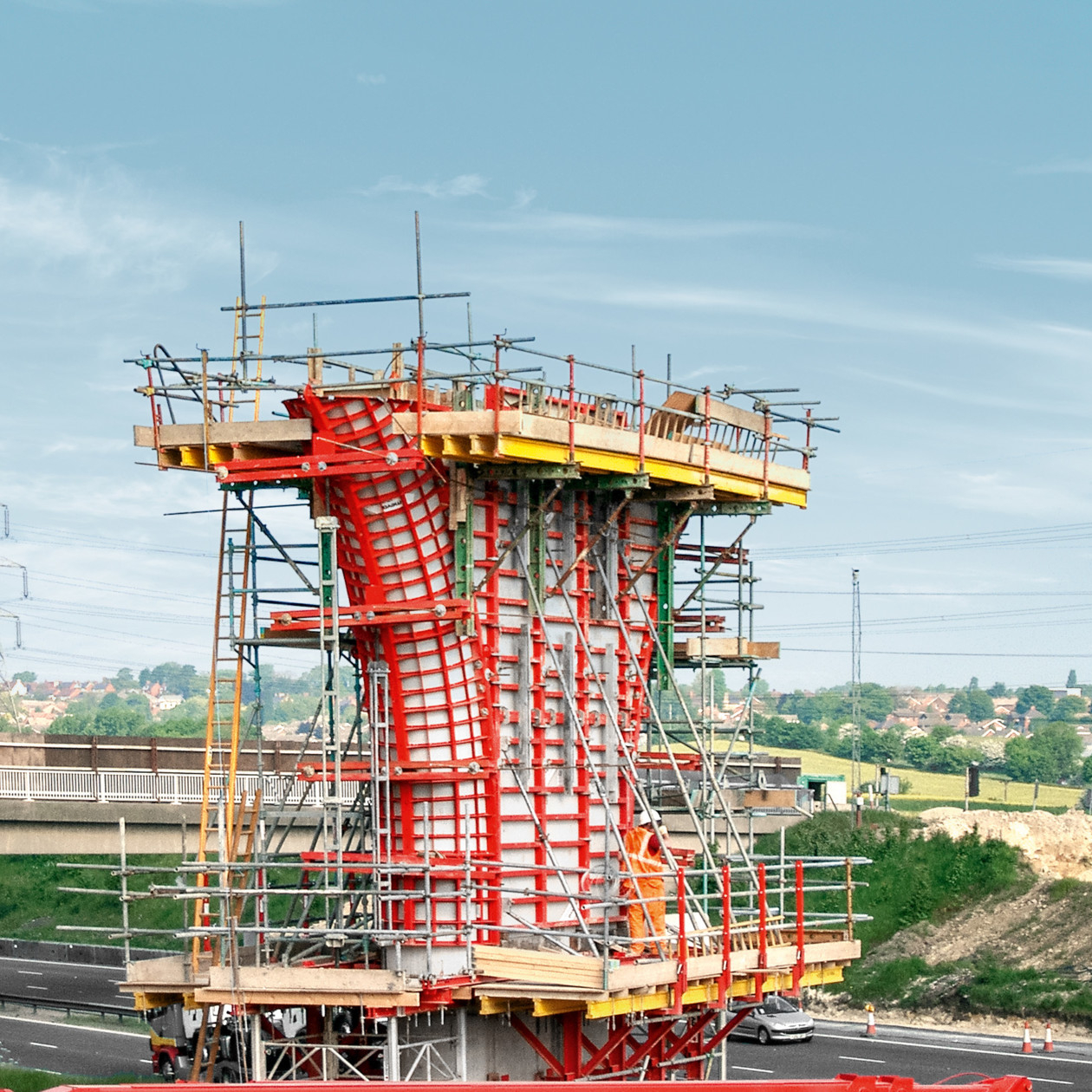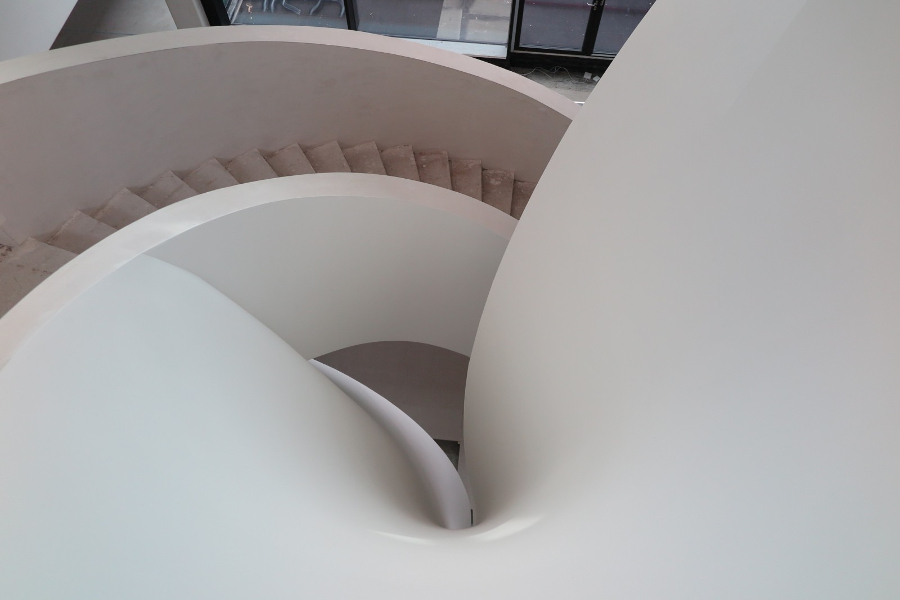Contractor: Ed. Züblin AG, Bereich Stuttgart (D)
A unique spiral staircase in Stuttgart, subject to high architectural concrete requirements, required meticulous planning, design and workmanship.
The development of state-of-the-art concrete formulations and formwork incorporating a variety of materials has paved the way for the casting of tall, filigree, densely reinforced, high-spec building elements. Apart from the selection of suitable materials and equipment, architectural concrete contracts also demand a co-ordinated approach on the part of all project team members. To ensure that clients, architects, other designers and contractors share a common vision, it is important to define aesthetic features such as shape, texture, colour and joint patterns as precisely as possible in advance.
Can all this be planned? Of course!
International associations and organisations have developed their own guidelines to facilitate the clear definition of the required concrete finish and establish uniform design methods. The German Society for Concrete and Construction Technology (DBV e.V.) has issued a good-practice guide on this subject containing important details. Similar guidelines have been published in other countries for the same purpose. The DBV classification defines four classes of architectural concrete, from SB1 to SB4 as the grade with the most stringent demands, together with the associated properties. In case of enhanced aesthetic requirements, e.g. for facades or showpiece building elements, the DBV recommends specification of the desired fair-faced concrete finish on the basis of a sample surface. This also allows the achievable quality to be determined under actual site conditions.
Bold spiralling concrete feature
Fair-faced concrete is skilfully deployed by architects as a design feature on many new-build projects. For the contractors, compliance with the enhanced requirements requires considerable experience, sensitivity and ingenuity – as was the case for the new School of Engineering building at the DHBW (Baden-Wuerttemberg Cooperative State University) Stuttgart. An atrium at the heart of the handsome building casts light on a SB4 (highest-grade) architectural concrete spiral staircase that winds its way upwards from storey to storey on an inclined trajectory. The challenges posed by the geometry were thus compounded by the stringent requirements placed on the concreting results: an extra-smooth finish of uniform colour with a minimum number of construction joints.
Turning visions into reality
Meeting the requirements for SB4-grade architectural concrete, the graceful, white concrete staircase looks as if it has been cast in one piece. To achieve an even coloration – particularly with light colours, such as that of the staircase – the DBV recommends tailoring the element geometry to quick, straightforward concrete pours. It advises against complex geometries so as to permit uniform tightening of the tie rods. This is all the more complicated with curvilinear forms.
"We turn architects’ visions into reality."
Jochen Moosmann, Head of Special Design, MEVA
“This entails reproducing the predetermined shape, working out how best to cast this in terms of individual elements and deciding how to support, tie and strip these elements.” The solution in this case involved forming the staircase ramp and parapet separately. As only a low fresh concrete pressure acted on the flat formwork for the ramp, the dimensional accuracy was achievable without ties. Similarly, by tying above and below the parapet, this was also kept free of tie holes.
As if cast in one piece
A real eye-catcher for visitors, the spiral staircase at the DHBW circles slantingly upwards across all building levels. The responsibility for designing the formwork fell to MEVA’s Special Design Office, headed by Jochen Moosmann. As he explains, the detailed planning required a considerable amount of manual input. “The formwork comprises a series of individual volumes which first had to be designed in 3D, then broken up again to ensure that all curves and angles are a perfect match.” Construction of the staircase necessitated the inclusion of a joint between ramp and parapet that blends well with the overall staircase composition.
True-to-shape construction
The fact that the stair flights project beyond the building levels and are offset relative to each other necessitated an integral concept for supporting the individual staircase elements. The team from distinguished contractor Ed. Züblin AG used MEVA’s MT 60 shoring tower system to build a series of platforms for the high-precision support of the special formwork. Detailed planning of the individual elements then made it almost as easy to assemble the special formwork as the shoring tower itself. The feedback from the site managers was overwhelmingly positive: “MEVA did a really brilliant job.” The constituent parts of the special formwork were designed with inch-perfect accuracy and labelled in accordance with an assembly drawing to facilitate erection. The MT 60 shoring tower likewise impressed by its straightforward assembly – without tools, in horizontal or upright position – and lightweight components weighing a maximum of 15 kg.
Contractor: Ed. Züblin AG, Bereich Stuttgart (D)
Project: Project Baden-Wuerttemberg Cooperative State University Stuttgart
Principal: Bundesbau (Federal Construction Agency), BadenWürttemberg, Schwäbisch Gmünd
Architects: 3XN, Wenzel + Wenzel
Engineering & Support: MEVA Schalungs-Systeme GmbH, Haiterbach.


